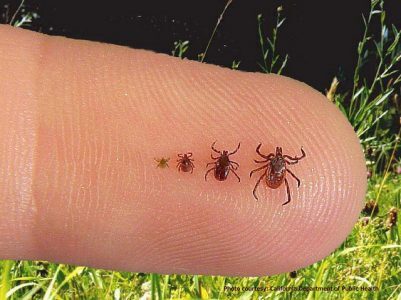
Another warm winter means an early tick season! Unfortunately, the black legged tick, commonly known as a deer tick, and associated with Lyme Disease are back with a vengeance throughout Connecticut and the northeast. Lyme Disease is actually named after the town Lyme, Connecticut, where, in 1975, an unusually high rate of adolescent arthritis was being reported. Three years later, in 1978, researchers discovered that the disease that was causing adolescent arthritis was actually transmitted by the deer tick, hence the name Lyme Disease. So why is the deer tick and Lyme Disease so closely associated? And why at Urgent Care West Hartford are we always asked, “if I’m bitten by a Deer Tick, how do I know if I have Lyme Disease?” Let’s dive in.
What is Lyme Disease?
Lyme Disease is a bacterial infection caused by Borrelia Burgdorferi, and is spread to humans by ticks. Ticks (parasites) survive by finding a host (another animal) and feeding on the host’s blood. While not all ticks carry Lyme Disease, in New England the black-legged tick, more commonly known as the Deer Tick, can transmit the bacterial infection to other animals including humans. This is why North-easterners especially associate Lyme Disease with Deer Ticks.
How Do I Know if Am I at risk for Lyme Disease?
Of course, the surest way to know if you’re at risk is to be tested. There are definite symptoms of Lyme Disease such as:
- fatigue
- joint aches and pains
- a target shaped rash
- low-grade fevers or chills
Many of these symptoms can be interchangeable with other medical issues, but if and when a bulls-eye rash appears near or around the site of the tick bite, that is a sure sign. It’s vital to get to a doctor or one of our walk in urgent care centers during the “incubation” time which takes place 24-48 hours from the event of the bite. The longer you wait to get tested or treated the higher the risk is for contracting Lyme Disease. Don’t wait, get checked today.
How can I avoid being bitten by a Deer Tick?
Ideally, of course, we want to avoid being bitten by a deer tick, or any tick for that matter. Luckily, there are steps we can take which begins with the kind of bug repellent you use:
- Use an insect repellent containing the ingredient Deet.
You may come into contact with ticks during outdoor activities around your home or when walking through vegetation such as leaves (on trees or on the ground) or shrubs, as black legged ticks live primarily in moist and humid environments. For the most part they inhabit wooded or high grassy areas.
- To avoid deer ticks and ticks of all kinds, walk in the center of trails and avoid tall vegetation. Wear socks and pants whenever possible.
- Check your body for ticks after being outdoors, even in your own yard.
Use a mirror to view all parts of your body. Take special care to check these parts of your body and your child’s body for ticks:
- Under the arms
- Behind the ears
- In the scalp
- Inside the belly button
- Back of the knees
- In and around all body hair
- Between the legs
- Around the waist
Be sure to check your clothing and pets for ticks because ticks may be carried into the house on clothing and pets. Both should be examined carefully, and any ticks that are found should be removed.
Here’s a cool tip: Did you know that placing your clothes into a dryer on high heat effectively kills ticks?
Lyme disease is not to be taken lightly. If you have been bitten by a tick, you can walk right into our urgent care center, no appointment necessary, at 1030 Boulevard, West Hartford, CT 06119-1801. At AFC Urgent Care West Hartford, we are open 7 days a week and ready to treat you. You can save time by checking in online and we accept most insurances.